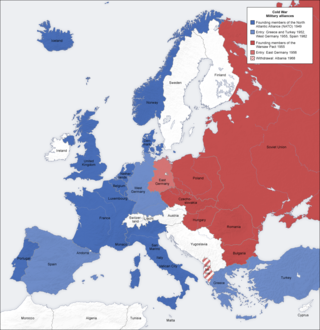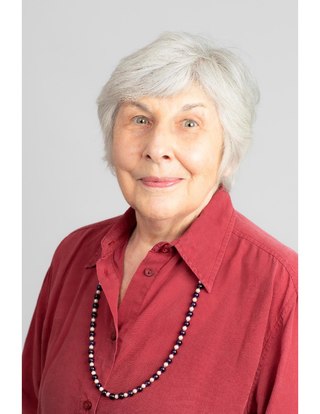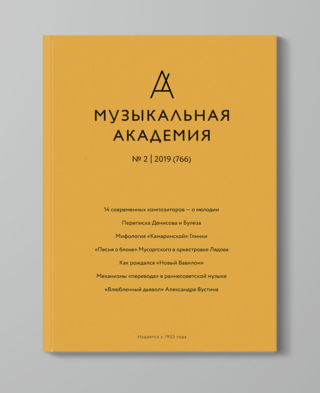Related Research Articles

The United States Information Agency (USIA) was a United States government agency devoted to the practice of public diplomacy which operated from 1953 to 1999.

The Helsinki Final Act, also known as Helsinki Accords or Helsinki Declaration was the document signed at the closing meeting of the third phase of the Conference on Security and Co-operation in Europe (CSCE) held in Helsinki, Finland, between 30 July and 1 August 1975, following two years of negotiations known as the Helsinki Process. All then-existing European countries except Andorra and Hoxhaist Albania, as well as the United States and Canada, signed the Final Act in an attempt to improve the détente between the East and the West. The Helsinki Accords, however, were not binding as they did not have treaty status that would have to be ratified by parliaments. Sometimes the term "Helsinki pact(s)" was also used unofficially.

The Cold War was a period of geopolitical tension between the United States and the Soviet Union and their respective allies, the Western Bloc and the Eastern Bloc, that started in 1947, two years after the end of World War II and lasted to 1991, the fall of the Soviet Union.
The Congress for Cultural Freedom (CCF) was an anti-communist cultural organization founded on June 26, 1950 in West Berlin, and was supported by the Central Intelligence Agency (CIA). At its height, the CCF was active in thirty-five countries. In 1966 it was revealed that the CIA was instrumental in the establishment and funding of the group. The congress aimed to enlist intellectuals and opinion makers in a war of ideas against communism.

Cultural diplomacy is a type of public diplomacy and soft power that includes the "exchange of ideas, information, art, language and other aspects of culture among nations and their peoples in order to foster mutual understanding". The purpose of cultural diplomacy is for the people of a foreign nation to develop an understanding of the nation's ideals and institutions in an effort to build broad support for economic and political objectives. In essence "cultural diplomacy reveals the soul of a nation", which in turn creates influence. Public diplomacy has played an important role in advancing national security objectives.

The Information Research Department (IRD) was a secret Cold War propaganda department of the British Foreign Office, created to publish anti-communist propaganda, including black propaganda, provide support and information to anti-communist politicians, academics, and writers, and to use weaponised information, but also disinformation and "fake news", to attack not only its original targets but also certain socialists and anti-colonial movements. Soon after its creation, the IRD broke away from focusing solely on Soviet matters and began to publish pro-colonial propaganda intended to suppress pro-independence revolutions in Asia, Africa, Ireland, and the Middle East. The IRD was heavily involved in the publishing of books, newspapers, leaflets and journals, and even created publishing houses to act as propaganda fronts, such as Ampersand Limited. Operating for 29 years, the IRD is known as the longest-running covert government propaganda department in British history, the largest branch of the Foreign Office, and the first major anglophone propaganda offensive against the USSR since the end of World War II. By the 1970s, the IRD was performing military intelligence tasks for the British Military in Northern Ireland during The Troubles.
The Cold War was reflected in culture through music, movies, books, television, and other media, as well as sports, social beliefs, and behavior. Major elements of the Cold War included the threat of communist expansion, a nuclear war, and – connected to both – espionage. Many works use the Cold War as a backdrop or directly take part in a fictional conflict between the United States and the Soviet Union. The period 1953–62 saw Cold War themes becoming mainstream as a public preoccupation.

This is an English language bibliography of scholarly books and articles on the Cold War. Because of the extent of the Cold War, the conflict is well documented.

Soviet Military Power was a public diplomacy publication of the US Defense Intelligence Agency (DIA), which provided an estimate of the military strategy and capabilities of the Soviet Union during the final years of the Cold War, ostensibly to alert the US public to the significant military capabilities of the Soviet Armed Forces. First published in early October 1981, it became an annual publication from 1983 until the collapse of the Soviet Union in 1991. Already in draft as the Soviet Union collapsed, the 1991 version was retitled "Military Forces in Transition". In addition to the majority English version, Soviet Military Power was translated, printed, and disseminated in a variety of languages, including German, French, Japanese, Italian, and Spanish.

As soon as the term "Cold War" was popularized to refer to postwar tensions between the United States and the Soviet Union, interpreting the course and origins of the conflict became a source of heated controversy among historians, political scientists and journalists. In particular, historians have sharply disagreed as to who was responsible for the breakdown of Soviet Union–United States relations after the World War II and whether the conflict between the two superpowers was inevitable, or could have been avoided. Historians have also disagreed on what exactly the Cold War was, what the sources of the conflict were and how to disentangle patterns of action and reaction between the two sides. While the explanations of the origins of the conflict in academic discussions are complex and diverse, several general schools of thought on the subject can be identified. Historians commonly speak of three differing approaches to the study of the Cold War: "orthodox" accounts, "revisionism" and "post-revisionism". However, much of the historiography on the Cold War weaves together two or even all three of these broad categories and more recent scholars have tended to address issues that transcend the concerns of all three schools.

Sheila Mary Fitzpatrick is an Australian historian, whose main subjects are history of the Soviet Union and history of modern Russia, especially the Stalin era and the Great Purges, of which she proposes a "history from below", and is part of the "revisionist school" of Communist historiography. She has also critically reviewed the concept of totalitarianism and highlighted the differences between Nazi Germany and the Soviet Union in debates about comparison of Nazism and Stalinism.

Eastern Bloc media and propaganda was controlled directly by each country's communist party, which controlled the state media, censorship and propaganda organs. State and party ownership of print, television and radio media served as an important manner in which to control information and society in light of Eastern Bloc leaderships viewing even marginal groups of opposition intellectuals as a potential threat to the bases underlying communist power therein.
During the Cold War (1947–1991), when the Soviet Union and the United States were engaged in an arms race, the Soviet Union promoted its foreign policy through the World Peace Council and other front organizations. Some writers have claimed that it also influenced non-aligned peace groups in the West.
Sarah Davies is a historian specializing in the Soviet Union during the Stalin era. She is a professor of history at Durham University in Durham, England, United Kingdom, and currently serves as chair of the History Department.
Western media is the mass media of the Western world. During the Cold War, Western media contrasted with Soviet media. Western media has gradually expanded into developing countries around the world.
English rock singer Elton John played eight concerts in the Soviet Union between 21 and 28 May 1979. The two-city tour was a significant event amid Cold War tensions between the USSR and the West, and a sign of the Communist authorities' emerging tolerance towards Western popular culture. The shows were among the first performed in the USSR by a pop act, following visits by Cliff Richard and Boney M. Billboard magazine said that the shows were "significant and successful" and described John as "the first out-and-out rock artist to appear in the U.S.S.R."

Muzykalnaya Akademiya, known between 1933 and 1992 as Sovyetskaya Muzyka, is the oldest Russian peer-reviewed academic journal about music.
Cuadernos was a Spanish-language magazine that was published in Paris, France, in the period 1953–1965. Its full title was Cuadernos del Congreso por la Libertad de la Cultura. It was one of the publications of the Congress for Cultural Freedom.
Britanskii Soiuznik was a weekly British propaganda periodical which existed between 1942 and 1950.
Foreign relations between France and the Soviet Union officially began on 28 October, 1924.
References
- 1 2 3 4 5 6 7 Sarah Davies (2013). "The Soft Power of Anglia: British Cold War Cultural Diplomacy in the USSR". Contemporary British History . 27 (3): 302, 309–310. doi:10.1080/13619462.2013.794695. S2CID 144961350.
- 1 2 3 4 Elena Goodwin (2019). Translating England into Russian: The Politics of Children's Literature in the Soviet Union and Modern Russia. London: Bloomsbury Publishing. pp. 61–62. ISBN 978-1-350-13401-0.
- ↑ Sarah Davies (2015). "The Soviet Union Encounters Anglia: Britain's Russian Magazine as a Medium for Cross-Border Communication". In Simo Mikkonen; Pia Koivunen (eds.). Beyond the divide: Entangled histories of Cold War Europe. New York; London: Berghahn Books. pp. 218–234. ISBN 978-1-78238-866-1.
- ↑ Annette Vowinckel (2019). "The Berlin Wall: Photographic Diplomacy in a Globalised World". In Simo Mikkonen; Giles Scott-Smith; Jari Parkkinen (eds.). Entangled East and West Cultural Diplomacy and Artistic Interaction during the Cold War. Berlin; Boston: De Gruyter Oldenbourg. p. 69. doi:10.1515/9783110573169. ISBN 9783110570502.